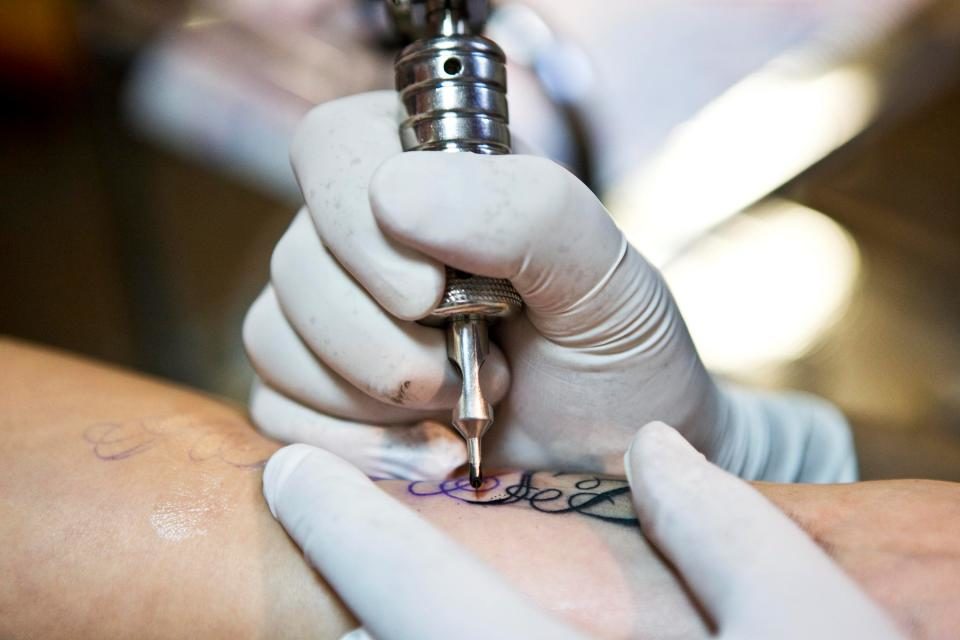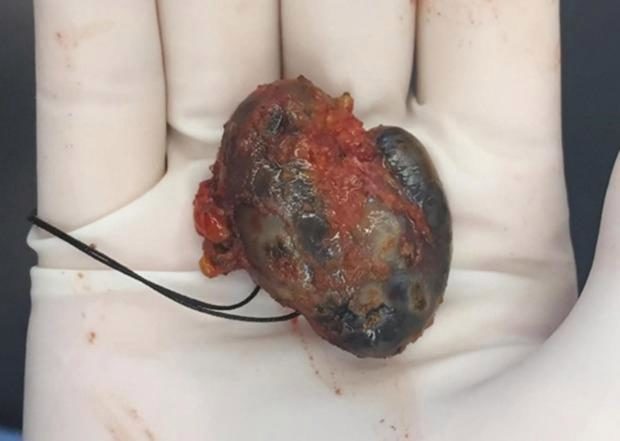
© GettyInk in the tattoo had caused a reaction in the woman 15 years later.
Tattos can cause nasty infections 15 years after you get inked, doctors have warned.
The stark message comes after an Australian woman was admitted to hospital with enlarged lymph nodes in her armpits.
The 30-year-old feared she had cancer after noticing the painful lumps but docs at the Royal Prince Alfred Hospital in Sydney removed the lumps and discovered they were harmless.
She had a history of headaches but had not experienced any fever, weight loss, night sweats, shortness of breath, dizziness or chest pain.
Experts concluded they had been caused by a reaction to a tattoo she had done on her back 15 years ago.
She also had a tattoo on her left shoulder that was done two-and-a-half years ago
The case study, published in the journal
Annals of Internal Medicine, suggests doctors should ask about tattoos when treating patients with lymphoma - cancer of the lymphatic system.
The lymphatic system is a network of tissues and organs that help rid the body of toxins and waste, so if it becomes affected by tattoo ink it could leave people at a greater risk of developing infections.
Medics already know that tattoos could cause cancer.
Researchers from the European Synchrotron Radiation Facility in France recently discovered the chemicals in tattoo ink can travel in the bloodstream and accumulate in the lymph nodes, obstructing their ability to fight infection.Their report, published in peer-reviewed journal Scientific Reports, noted ink can contain tiny particles of heavy metals such as nickel, chromium, manganese and cobalt, as well as other toxic impurities.
And one colour was far more dangerous than the rest: White.
Titanium dioxide, which is a chemical commonly used to create white ink, is known to increase a person's risk of developing cancer.
It also causes itching, skin irritation, and delayed healing.

The tattoo had caused the woman’s lymph nodes to become swollen and painful.
Hiram Castillo, one of the authors of the study, said: "When someone wants to get a tattoo, they are often very careful in choosing a parlour where they use sterile needles that haven't been used previously.
"No one checks the chemical composition of the colours, but our study shows that maybe they should."
Bernhard Hesse, another of the studies authors, added: "We already knew that pigments from tattoos would travel to the lymph nodes because of visual evidence: the lymph nodes become tinted with the colour of the tattoo," said Bernhard Hesse.
"It is the response of the body to clean the site of entrance of the tattoo.
"What we didn't know is that they do it in a nano form, which implies that they may not have the same behaviour as the particles at a micro level.
"And that is the problem: we don't know how nanoparticles react."
Comment: For more on the risks of tattoos see: The Truth About Tattoos: Health Risks, Toxicity and More